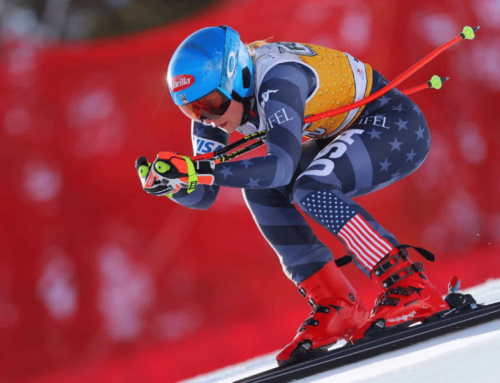Letter: Give our most dedicated athletes the best chance to succeed
This is offered in unapologetic support of those who have found a love of ski racing. Those who have discovered the joys and understand the benefits of pursuing excellence. It includes athletes and all the everyone who supports them – parents, coaches, programs, sponsors, and governors. It is also a plea not to arbitrarily limit these people at an ideal time of life to give and get the greatest benefit.
It is offered with full support of USSA work to study and offer the healthiest possible programs under their governance and regulation. The sticky part comes when they attempt to “level a playing field” they do not directly govern – International Racing, governed by the FIS; which we have chosen to belong to in order to gain access its programs.
The mission of the FIS is to offer unlimited opportunities similar to universities, businesses, militaries, orchestras, theaters, and professional sports. All are designed to learn and achieve through the discipline of competition. All demonstrate they understand its importance in motivation and the accountability. Limiting our athletes participation in this international arena, that we have chosen to enter, is not the place to begin to address the health of our domestic programs or the behavior of our members.
SUPPORTING DATA, ANALYSES, AND OPINION
HIGHER EDUCATION: The late teens is our most fertile period for the development of the skills, strength, techniques, and habits of success. It is the time we apply great intensity and focus to develop the foundations of achievement – “higher education”. Higher education costs time and energy and money. Decisions about time, energy and money and any sacrifices that they may entail are made by the participants. Institutions and their governing bodies provide the best programs and support they can.
SKI RACING IS EXPENSIVE: Pursuing excellence in international competition from outside Europe is particularly expensive. That’s a reality our racers must face. USSA must also face this reality. Their job is to provide an effective means of access to FIS racing, NOT to isolate or protect their members from it.
FREEDOM: This is the USA – Land of the Free and Home of the Brave where Liberty and the Pursuit of Happiness are rights. It should not be our business to hold back those brave enough to try to be the best they can be. It should NOT be our business to cut the legs out from under our national development at a most critical time for athlete development.
RACING IS VALUABLE TRAINING: Well designed preparation is essential, but racing is an important part of training advanced athletes. It’s also exciting, fun, and motivating. If we arbitrarily limit the opportunities for fundamentally sound racers to learn and grow through racing will will retard their development and risk losing them.
WHAT THE BEST YOUNG FIS RACERS ARE DOING:
FIS Races entered by SSWSC NPS Men’s Group (12 U19 athletes): An average of 54 starts each (the sum of 42 starts, all events, prior to 3/12 and 12 remaining entries). Notes: 1)This group trained 105 additional days during prep and winter. 2) None ever raced outside of RC except when they qualified for NPS, NJC, NAC, NC, or an NTG European Project.
FIS races entered by WJC men from major alpine countries: An average of 50 starts (36 starts through WJC and est. of 14 starts after WJC). Note: This number is unusually low due to may European race cancellations before January.
FIS Races entered by the top five US men born in 2003 – “first years”. An average of 52.5 starts. This group trained an average of 119 days during prep and winter periods. Clearly 50-55 is the number of starts chosen by the most successful young FIS athletes.
UPDATED INFO: Tech starts for the two US U19 groups (SSWSC NPS Men, and the Top 03s) would have totaled an average of 44 tech starts with a range of 38 to 52. They had an average of 8 speed starts.
Note: the tech starts include an average of 16 races requiring qualification – NPS, NAC, NJC, and NC events. This leaves an average of 28 FIS or NJR starts.
RACE/TRAINING BALANCE: 50-55 starts allows a well-balanced amount of racing, training, and rest. Events generally have 2-4 race starts leaving 4-8 days between events = 1-2 days of rest, 2-5 days of training, and a travel day. A 17 event average leaves 7 weeks of no FIS start, allowing rest re-creation, and longer training blocs.
TO THE DECISION MAKERS: Please give our most dedicated athletes the best chance to succeed and lead. Remember being 18, gifted, ambitious, with a dream and the bit in your teeth … LET THEM GO to find out what they can do. Thanks for your time and consideration, and all you do.
— Scott Wilson/Lead FIS Coach
Steamboat Springs Winter Sports Club
This letter was in response to a recent article “Health of Sport hits snag over FIS start restrictions.“ Have some thoughts on this? Send a letter to the editor. We’ll publish it.
Letters to the editor are wholly the opinion of the author. Ski Racing Media does not endorse, edit, or fact-check letters to the editor. We do have a couple rules, which can be found here.





















